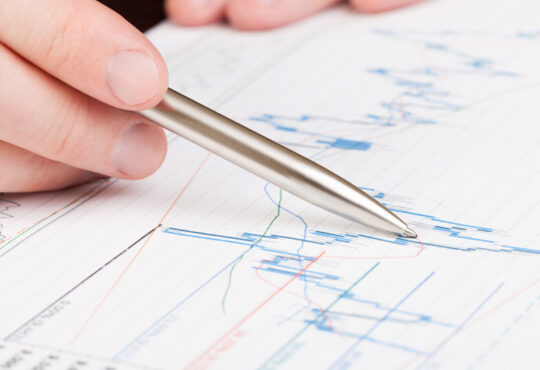
Individual savings accounts (ISAs) are a way to save or invest tax-efficiently. They come in various guises, so it’s worth knowing what’s on offer so you can choose the right one for your needs.
As the end of the tax year approaches on April 5, savers and investors will be encouraged to make the most of their annual tax-free ISA allowance. And the tax benefits of some types of ISA are likely to be highlighted this year due to planned cuts to the separate capital gains tax and dividend tax allowances for investors.
This guide helps explain more about ISAs, the benefits and drawbacks and, for those taking stock of existing savings and investments – how to safely transfer any ISAs you may already have, should you choose to do so.
What is an ISA?
An ISA is a wrapper you can put around cash savings or investments so that they are free from tax. With an ISA, there’s no tax to pay on savings interest, dividend income or investment growth, as there might be otherwise – and ISAs don’t need to be declared in a self assessment tax return.
Individuals can put up to £20,000 into ISAs each tax year – this is the ISA allowance. The tax year runs from April 6 to April 5 the following year.
There are various types of ISA – and savers can split their ISA allowance between different types, subject to ISA rules.
There are a range of different types of ISA, but not everyone is eligible for all of them:
- Cash ISA – cash savings accounts with interest paid free of tax. Savers can opt for instant access, notice accounts or fixed rates. Available to anyone from age 16.
- Stocks and shares ISA – invests in equities – either individual stocks or investment funds, or a combination of the two. Invest a lump sum or drip fee money each month. Available to anyone from age 18.
- Lifetime ISA – available to those over 18 and under 40. Save towards a deposit for your first home, or for retirement. Annual saving limit is £4,000 (this counts towards your annual £20k ISA limit). Government pays a 25% bonus on your savings each year until age 50. If the Lifetime ISA savings are not used to buy a first home the money can’t be accessed until age 60.
- Junior ISA – long term savings for children under 18. Save or invest up to £9,000 per child each tax year. The money can’t be accessed until the child turns 18.
- Innovation Finance ISA – a tax-free wrapper around peer-to-peer (P2P) loans allowing returns from P2P lending to grow free of tax.
- Help to Buy ISA – while these are no longer available to open, savers with an existing account can still pay in up to £200 a month and receive a government bonus of 25% when they use the money to purchase a first home.
The annual £20,000 ISA allowance can be split between different types of account. For example, a saver might put £10,000 into a cash ISA and £10,000 into a stocks and shares ISA.
Anyone eligible for a Lifetime ISA could split their annual savings by putting £4,000 in a Lifetime ISA and and then up to £16,000 into a mix of any other types of ISA.
How do ISAs work?
Money saved in an ISA is sheltered from tax (be aware this does not include stamp duty due on share trades – for ISAs that hold individual stocks – or inheritance tax).
Savers can usually deposit a lump sum into most ISA accounts or save or invest on a regular basis, usually monthly. Most banks, building societies, asset managers and other financial companies offer ISAs and typically an account can be opened online or over the phone with as little as £10.
Individuals can only have one of each type of ISA in any tax year – for example, one cash ISA and one stocks and shares ISA – but not two different cash ISAs. To move an existing ISA to a new provider savers must transfer them in the correct way to preserve the tax-free benefits (see question on transfers below).
What are the benefits of ISAs?
The main benefit of an ISA is that it is tax free. There is no need to declare or pay tax on the interest, income or growth earned on the money. The benefits could be more important for stocks and shares or equity fund investors, however, than savers looking for a cash account.
This is because, since the introduction of the personal savings allowance (PSA) in 2016, basic rate taxpayers can earn up to £1,000 in savings interest each year tax free. Higher rate taxpayers can earn £500 per year. It means many savers have been lifted out of savings interest tax altogether.
In many cases cash ISAs are paying lower rates than the best savings accounts on the market, so savers are increasingly ignoring cash ISAs.
But Sarah Coles, senior personal finance analyst at investment management company Hargreaves Lansdown, says rising interest rates could tip the balance in favour of cash ISAs for growing numbers of savers: “A higher rate taxpayer with £11,500 in the current top-paying one-year fixed rate account will start to pay tax, while a basic rate taxpayer with £23,000 will. But interest earned in an ISA is tax-free.
“The benefits of a cash ISA don’t start and end with the tax saving today. If frozen income tax thresholds mean pay rises push you into a higher tax bracket, the ISA will suddenly be much more rewarding.
“Likewise, if interest rates rise, and you keep building your savings, or the government decides to cut the PSA the way it has done with so many other allowances, you’ll be grateful for your ISA.”
For those investing in equities, an ISA still offers attractive tax benefits. Dividend income, interest and capital gain are all free of tax within an ISA.
This is likely to become more important for investors as the annual personal capital gains tax allowance will be slashed from £12,300 to £6,000 in April this year – and again to £3,000 from April 2024.
The tax free allowance for dividend income is also set to be halved this April from £2,000 to £1,000 and further to £500 next year.
What will an ISA cost me?
There are no fees or charges to save in a cash ISA – this is the same for Junior cash ISAs and Lifetime cash ISAs. Some providers may have minimum deposit limits. Fixed rate cash ISAs typically have higher minimum deposits and there are usually penalties for early withdrawal.
For ISAs that invest in equity funds or stocks and shares (including Junior stocks and shares ISAs) there are likely to be fees and charges.
There’s a wide range of stocks and shares ISA providers. They will usually charge an annual account fee, which can be up to 5%, plus dealing charges when you buy or sell individual stocks or units in funds.
Among the lowest cost investment ISAs are UK tracker funds within an ISA wrapper, where your underlying investment will track the performance of the FTSE100 or FTSE 250 index, for example. Always compare charges and fees on different platforms.
James Norton, head of financial planners at asset manager Vanguard, says: “Over the long term, fees and charges will erode your hard-earned savings, so the lower the costs, the greater your chances of investment success.
“Costs are one of the few things investors can control so it’s important to keep them as low as possible.”
Can I transfer my ISAs?
Savers with ISA savings from previous years should take stock now to ensure they are still getting good value on their ISA money. If an old cash ISA rate has fallen, for example, take steps to transfer the money to a new cash ISA with a higher interest rate.
ISA funds must be transferred in the correct way to preserve the tax-free ISA status.
Savers can apply to the new ISA provider for a transfer of their ISA funds. Similarly investors can transfer stocks and shares ISA funds between different providers, subject to providers’ own rules (not all will accept transfers).
Again, apply to the new provider for an ISA transfer. Bear in mind ISA transfers (cash or stocks) can take up to 30 days so it’s important to allow plenty of time before the end of the tax year.
For ISA transfers of savings or investments made within the current tax year, the whole balance of the ISA must be transferred. But for previous years’ ISAs a partial transfer can be made, if this is preferable. Check the transfer rules of different ISA providers first.
What are the drawbacks of ISAs?
There are some drawbacks to ISAs. The rules around which ISAs you can open and those governing the transfer of ISA funds between providers can seem complicated and, while it is more than sufficient for most, there is a £20,000 saving limit per year.
In many cases the best rates on cash ISAs can be beaten by standard savings accounts, so always shop around to find the most competitive deal. The PSA means most savers won’t have to worry about tax on their savings interest.
How to choose which ISA to open?
How to choose the best ISA will come down to individual savings goals, attitude to risk and the time frame the saver or investor has in which to grow their pot.
For example, for someone saving towards a deposit for a house purchase, a cash ISA (or Lifetime ISA if eligible) is likely to be the best option. This is because the saver will need the money fairly soon and won’t want any risk to the capital..
For those with an eye on retirement, saving up to supplement pension income, for example, a stocks and shares ISA might fit the bill.
Over the long term the hope is that money invested in the stock market will outperform the returns on cash savings. And provided there is at least a five-year time frame to invest, this should mean investors can ride out the peaks and troughs of the market. But with stock market investing there is always a risk to capital.
Chris Rudden, head of investment consultants at digital wealth manager Moneyfarm, says: “Beginners should ideally go for something that is managed on their behalf. There is a lot of noise in the market, as well as conflicting information, and the process can be very daunting. But a managed ISA can help ensure you have the most effective, diversified investments that are suitable to your goals.”





